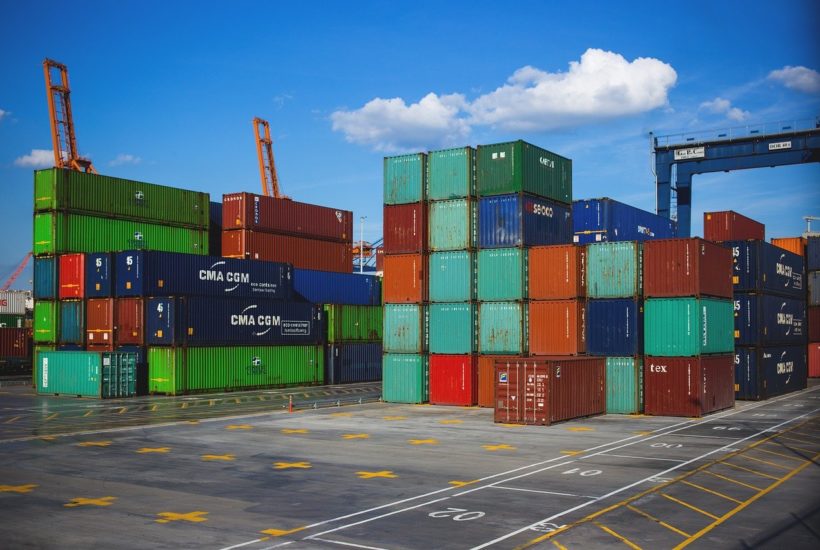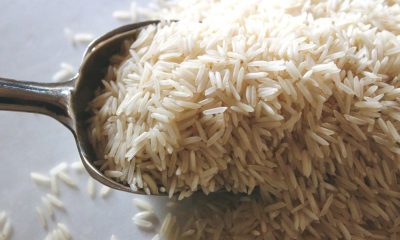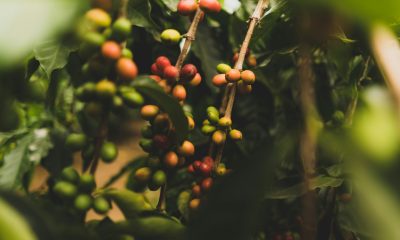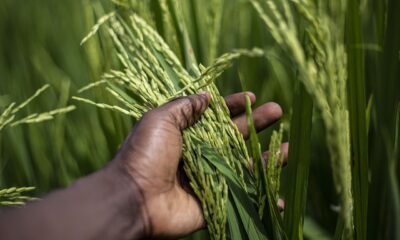Featured
Domestic demand versus export demand: which is better?
Palm Oil closed lower on ideas of decreasing production and private reports of weaker demand. It is seasonally a time for trees to produce more due to more regular rains. Getting workers to do the harvest remains hard and the lack of labor has been a big problem. At least some of the plantation owners have asked for more migrant workers to cover the lack of workers that can be sourced locally.

Wheat
Winter Wheat markets were higher and made new highs for the move again last week. It is a weather market right now and the planting weather is dry in many northern hemisphere areas. Western Europe is likely to get some good rains in the short term, but southern Russia could stay dry. Some showers are forecast for Ukraine this week, but the eastern sections of the country should stay dry. Kazakhstan has been dry. These areas are trying to plant the next Winter Wheat crop but the dry weather and the dry soils are keeping farmers out of the fields. Farmers are not really selling much of the current crop due to fears about production of the next crop. Less production is likely in Argentina due to drought, but the rains are coming. About quarter of Argentine growing areas are affected by the dry weather right now. Western Australia has also been very dry. The western Great Plains remains mostly hot and dry. The Midwest has had good rains.
Weekly Chicago Soft Red Winter Wheat Futures

Weekly Chicago Hard Red Winter Wheat Futures

Weekly Minneapolis Hard Red Spring Wheat Futures

Corn
Corn and Oats moved higher and Corn made new highs for the move last week. Some of the rally has been in sympathy with the rallies in Wheat, but farmers in the US are holding Corn for later sale. Producers are unhappy with the price and the Soybeans are paying much better, so farmers are selling the Soybeans and holding the Corn. Harvest reports from the country suggest that production of a good crop is likely. Demand is holding strong for exports, but domestic demand was cut back from previous estimates. The demand has come primarily from China as the state companies bought for the reserve, but that buying appears to be almost complete now. The harvest has expanded into the Midwest with very good harvest conditions. The Midwest harvest has been slow as the Corn is slow to dry down.
Weekly Corn Futures:

Weekly Oats Futures

Soybeans and Soybean Meal
Soybeans closed lower and Soybean Meal closed higher for the week as strong export demand continued. The demand has been primarily from China but other countries are buying in the US as well. Reports indicated that the producer is selling Soybeans right off the combine or is delivering against previous contracts. Chinese buying for the reserve is almost finished. Ideas are that individual crushers are still with positions to buy. The trade generally expects China to shift its buying back to Brazil in the near future, but Brazil has been hot and dry and parts of Argentina have also been dry and some of the early planting has been delayed. That might keep the Chinese buying in the US for a little longer. Brazil is starting to get rains, so all of the projected Soybeans area will get planted and a big crop from Brazil is still expected.
Weekly Chicago Soybeans Futures:

Weekly Chicago Soybean Meal Futures

Rice
Rice was higher last week in choppy trading. A poor weekly export sales report hurt prices on Friday. Export demand had been very strong until now. Reports indicate that domestic demand has been poor to average. The harvest has been active in northern states with good field yields reported. Southern Louisiana and Texas are done with the first crop harvest and are waiting for the second crop to mature. Producers had to endure Hurricane Delta in Louisiana, but the Ricer apparently made it through with only minimal losses if any losses were seen at all. Quality is said to be very good, especially in Arkansas.
Weekly Chicago Rice Futures

Palm Oil and Vegetable Oils
Palm Oil closed lower on ideas of decreasing production and private reports of weaker demand. It is seasonally a time for trees to produce more due to more regular rains. Getting workers to do the harvest remains hard and the lack of labor has been a big problem. At least some of the plantation owners have asked for more migrant workers to cover the lack of workers that can be sourced locally. Soybean Oil and Canola were lower. Canola farmers are selling due to harvest pressure, but industry and speculators are buying. The Canadian Dollar is higher but Canola is still considered relatively cheap in the world market.
Weekly Malaysian Palm Oil Futures:

Weekly Chicago Soybean Oil Futures

Weekly Canola Futures:

Cotton
Cotton closed higher for the week and trends are up on the weekly charts. Hurricane Delta moved through the Delta and Southeast and did some damage to Cotton. Open bolls were reported in both regions and Cotton fiber was discolored or else blown out of the bolls due to the rain and winds. The discolored Cotton is getting a chance to recover now as it has turned dry and the fiber can be naturally bleached by the Sun. The weekly export sales report showed just moderate demand last week. There was no major Chinese demand. Demand should stay weak as long as the Coronavirus is around. Shopping is hard to do and many people are still unemployed. This is true in just about all countries.
Weekly US Cotton Futures

Frozen Concentrated Orange Juice and Citrus
FCOJ was near unchanged in choppy trading last week. Florida has been spared any hurricanes or other serious storms this year in a year that has been very active for tropical storms with a record amount of tropical storms hitting the US. The Coronavirus is still promoting consumption of FCOJ at home. Restaurant and food service demand has been much less as no one is really dining out. Florida production prospects for the new crop were hurt by an extended flowering period, but the weather is good now with frequent showers to promote good tree health and fruit formation. Brazil has been too dry and irrigation is being used. Showers are falling in Brazil now. Mexican crop conditions are called good to very good with ample rains.
Weekly FCOJ Futures

Coffee
Futures were lower last week in New York and higher in London. London had been better supported due to stronger demand ideas and worries about the weather in Vietnam and the country is getting too much rain now and flooding is being reported in the Central Highlands. The demand from coffee shops and other foodservice operations is still at very low levels as consumers are still drinking coffee at home. Reports indicate that consumers at home are consuming blends with more Robusta and less Arabica. The Brazil harvest is over and producers are selling due to the recent extreme weakness in the Real. Ideas are that production is very strong this year as it is the one year for the trees. Central America is also offering right now and offers are increasing. The weather is good in Colombia and Peru.
Weekly New York Arabica Coffee Futures

Weekly London Robusta Coffee Futures

Sugar
New York and London were lower. Brazil mills have been producing more Sugar and less Ethanol due to weak world and domestic petroleum prices. About 45% of the crush this year will go to Sugar, from 35% last year. It has been dry lately to affect Sugarcane production and producers are less aggressive sellers. India has a very big crop of Sugarcane this year but the Coronavirus has made exports hard. The Indian government has not yet announced the subsidy for exporters of Sugar so no one knows how much to charge yet. Thailand might have less this year due to reduced planted area and erratic rains during the monsoon season. Rains are moving through the country now from Vietnam and the Pacific. The EU is having problems with its Sugarbeets crop due to weather and disease. Demand appears to be about average.
Weekly New York World Raw Sugar Futures

Weekly London White Sugar Futures

Cocoa
New York and London were lower. Trends are turning down in both markets. The harvest for the next main crop is spreading through much of West Africa and very strong production is expected. Some concern is noted in Nigeria as rains keep falling and make it hard to sun dry the beans. Drier weather is currently in the forecast so conditions should improve. There are a lot of demand worries as the Coronavirus is not going away and could be making a comeback in the US. Europe is also seeing a return of the pandemic. The North American cocoa grind was 4% lower than a year ago and the Asian cocoa grind was down 10% from last year Ivory Coast is in the middle of the presidential campaign season and some acts of violence expected.
Weekly New York Cocoa Futures

Weekly London Cocoa Futures

__
(Featured image by Pexels via Pixabay)
DISCLAIMER: This article was written by a third party contributor and does not reflect the opinion of Born2Invest, its management, staff or its associates. Please review our disclaimer for more information.
This article may include forward-looking statements. These forward-looking statements generally are identified by the words “believe,” “project,” “estimate,” “become,” “plan,” “will,” and similar expressions. These forward-looking statements involve known and unknown risks as well as uncertainties, including those discussed in the following cautionary statements and elsewhere in this article and on this site. Although the Company may believe that its expectations are based on reasonable assumptions, the actual results that the Company may achieve may differ materially from any forward-looking statements, which reflect the opinions of the management of the Company only as of the date hereof. Additionally, please make sure to read these important disclosures.
Futures and options trading involves substantial risk of loss and may not be suitable for everyone. The valuation of futures and options may fluctuate and as a result, clients may lose more than their original investment. In no event should the content of this website be construed as an express or implied promise, guarantee, or implication by or from The PRICE Futures Group, Inc. that you will profit or that losses can or will be limited whatsoever. Past performance is not indicative of future results. Information provided on this report is intended solely for informative purpose and is obtained from sources believed to be reliable. No guarantee of any kind is implied or possible where projections of future conditions are attempted. The leverage created by trading on margin can work against you as well as for you, and losses can exceed your entire investment. Before opening an account and trading, you should seek advice from your advisors as appropriate to ensure that you understand the risks and can withstand the losses.

-

 Africa1 week ago
Africa1 week agoBank Al-Maghrib’s Final 2025 Meeting Expected to Maintain Key Interest Rate
-

 Africa5 days ago
Africa5 days agoMorocco Allocates 1.3 Billion Dirhams to Boost Startup Ecosystem Under Digital 2030 Strategy
-

 Crowdfunding2 weeks ago
Crowdfunding2 weeks agoStar Citizen Funding Soars as 2025 Becomes Its Most Successful Year Yet
-

 Crypto2 days ago
Crypto2 days agoAAVE Community Challenges Aave Labs Over Governance and Control

























